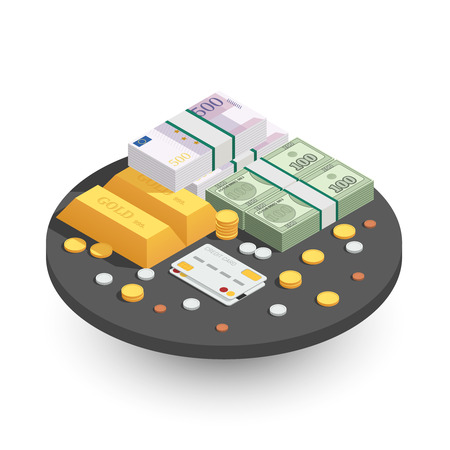Understanding Smart Budgeting in the U.S. Context
Smart budgeting in the United States goes beyond simply tracking income and expenses—it’s about making intentional financial decisions that reflect your personal values and fit seamlessly with your lifestyle. In a country known for its diverse spending habits and wide variety of financial tools, understanding how to budget effectively is essential for both immediate needs and long-term goals. Americans often face unique challenges such as fluctuating healthcare costs, student loan payments, and the desire for homeownership, all of which require a tailored approach to money management. Smart budgeting means evaluating not just what you spend, but why you spend it, and ensuring that every dollar supports your priorities. By aligning your budget with what matters most to you—whether that’s saving for retirement, traveling, or building an emergency fund—you can create a plan that is both realistic and motivating. Leveraging local resources like budgeting apps, credit unions, and community programs can also enhance your ability to manage finances in a way that works for you. Ultimately, smart budgeting empowers Americans to take control of their financial future while enjoying the present.
2. Categorizing Short-Term Expenses the American Way
Effective budgeting in the U.S. begins with a clear understanding of your short-term expenses—those recurring or occasional costs that arise within a typical month. Recognizing and organizing these categories ensures you have a realistic view of your cash flow and can set financial priorities that support both immediate needs and long-term goals.
Common Short-Term Expense Categories
The following table outlines the most common short-term expense categories for Americans, along with practical examples and strategies to manage each:
| Category | Examples | Management Strategies |
|---|---|---|
| Rent/Housing | Monthly rent, renter’s insurance, HOA fees | Automate payments; negotiate lease terms; consider roommates to share costs |
| Utilities | Electricity, water, gas, internet, trash collection | Track monthly usage; use energy-saving appliances; bundle services for discounts |
| Groceries | Supermarket purchases, meal kits, household staples | Create shopping lists; use loyalty programs; buy in bulk for savings |
| Transportation | Gas, public transit fares, rideshares, car maintenance/insurance | Use public transit when possible; maintain vehicles regularly to prevent costly repairs; compare insurance rates annually |
| Entertainment | Streaming subscriptions, movies, dining out, hobbies | Set a monthly entertainment budget; take advantage of free community events; rotate subscriptions to save money |
| Unexpected Costs | Medical co-pays, minor home repairs, pet emergencies | Maintain an emergency fund; review spending monthly to identify patterns; use flexible spending accounts if available |
Tracking and Managing Expenses Effectively
1. Use Digital Tools: Leverage budgeting apps like Mint or You Need a Budget (YNAB) to automatically track expenses and categorize transactions.
2. Set Realistic Limits: Allocate fixed amounts for each category based on your income and monitor your progress weekly.
3. Review Regularly: At the end of each month, review your spending to identify areas where you can cut back or need to adjust your budget.
A Practical Approach for U.S. Households
Categorizing short-term expenses in this structured way not only prevents overspending but also builds discipline—an essential habit for achieving lasting wealth. By adopting these American budgeting practices and tailoring them to your personal lifestyle, you lay the groundwork for smart financial decisions that will benefit you now and in the future.

3. Building a Practical Budget: Tools and Apps
When it comes to smart budgeting, leveraging the right tools is essential for staying organized and making informed financial decisions. In the United States, a variety of digital platforms and apps cater to both beginners and experienced budgeters. These resources not only simplify the process of tracking expenses and income but also empower users to set achievable short-term spending limits while planning for long-term wealth growth.
Popular American Budgeting Tools
Three standout solutions widely used across the U.S. are Mint, YNAB (You Need A Budget), and good old-fashioned spreadsheets. Each offers unique features that help you manage your money efficiently:
Mint
Mint is a free app that connects directly to your bank accounts, credit cards, and bills. It automatically categorizes transactions, provides visual breakdowns of your spending habits, and sends alerts for unusual activity or bill due dates. Mint’s intuitive dashboards make it easy for Americans to see where their money goes each month, helping them avoid overspending on daily expenses.
YNAB (You Need A Budget)
YNAB operates on a proactive budgeting philosophy: “Give every dollar a job.” This paid app focuses on helping users plan ahead by allocating funds to specific purposes, including savings goals or upcoming bills. YNAB is particularly popular among those aiming to break the paycheck-to-paycheck cycle—a common goal in American households striving for greater financial security.
Spreadsheets
For those who prefer hands-on control or have unique budgeting needs, custom spreadsheets (via Microsoft Excel or Google Sheets) remain a reliable choice. Americans often use templates tailored for tracking monthly expenses, debt payments, and investment growth. Spreadsheets allow maximum flexibility and can be adapted as your financial situation evolves.
Making Smarter Spending Decisions
The real power of these tools lies in their ability to provide up-to-date insights into your financial health. By consistently tracking expenses—whether with an app or a spreadsheet—you can quickly identify unnecessary spending and redirect funds toward higher priorities like emergency savings or retirement accounts. Additionally, many of these platforms offer goal-setting features that help you stay motivated as you work toward both short-term purchases and long-term wealth building.
4. Strategies for Saving: Emergency Funds and Everyday Habits
Building a solid foundation for both short-term stability and long-term wealth starts with smart saving strategies. In the American context, establishing an emergency fund is considered one of the most crucial first steps in financial planning. This fund acts as a safety net, helping you handle unexpected expenses—such as medical bills, car repairs, or job loss—without derailing your overall budget or dipping into long-term investments.
The American Approach to Emergency Funds
Financial advisors in the U.S. commonly recommend setting aside three to six months’ worth of living expenses in an easily accessible savings account. Here’s a simple breakdown of how to estimate your emergency fund target:
| Monthly Expense Category | Estimated Amount ($) |
|---|---|
| Rent/Mortgage | 1,500 |
| Utilities & Bills | 300 |
| Groceries | 400 |
| Transportation | 200 |
| Insurance & Healthcare | 250 |
| Total (Monthly) | 2,650 |
| Total Needed (6 Months) | 15,900 |
Integrating Savings Into Daily Routines
Savings success depends on consistency and discipline. Many Americans use automated systems to make this process effortless. Setting up automatic transfers from your checking account to a dedicated savings account—scheduled right after each payday—ensures that saving becomes a priority rather than an afterthought.
Tips to Automate and Maximize Savings:
- Direct Deposit Split: Ask your employer to deposit a portion of your paycheck directly into savings.
- Bank Automation Tools: Use banking apps that round up purchases to the nearest dollar and transfer the difference into savings.
- Savings Apps: Try apps like Digit or Qapital that analyze spending habits and move spare cash into savings automatically.
Curbing Impulse Purchases: Practical Habits for Everyday Life
Avoiding impulsive spending is another cornerstone of effective budgeting in American households. Common techniques include creating shopping lists before going to the store, implementing a 24-hour rule for non-essential purchases, and unsubscribing from promotional emails that encourage unnecessary buying. Using cash instead of credit cards for daily expenses can also help enforce mindful spending.
The 24-Hour Rule Checklist:
- Add item to wish list/cart instead of buying immediately.
- Wait at least 24 hours before making the purchase decision.
- If the desire fades or the item isn’t truly needed, remove it from your list.
- If still needed, compare prices and check reviews before purchasing.
By following these tried-and-true American strategies—building an emergency fund and integrating savings habits into your everyday life—you lay the groundwork for both short-term security and long-term financial growth.
5. Planning for Long-Term Wealth: Investments and Retirement
Building long-term wealth is a fundamental part of smart budgeting, ensuring your financial security well beyond immediate needs. In the United States, there are several accessible pathways to grow your wealth over time. Understanding and utilizing these tools early can make a significant difference in your financial future.
401(k)s and Employer-Sponsored Plans
A 401(k) plan is one of the most popular retirement savings vehicles for American workers. Many employers offer these plans, often with matching contributions—a valuable benefit you should take full advantage of if available. Contributing enough to receive your employer’s maximum match is essentially free money toward your retirement. These accounts allow your investments to grow tax-deferred, making them a cornerstone of long-term wealth building.
Individual Retirement Accounts (IRAs)
If you want more flexibility or don’t have access to an employer-sponsored plan, consider opening an IRA. Both Traditional and Roth IRAs offer tax advantages; Traditional IRAs may give you an immediate tax deduction, while Roth IRAs provide tax-free withdrawals in retirement. Starting early—even with small amounts—lets compound interest work in your favor over decades.
Brokerage Accounts
For goals beyond retirement or if you want more investment options, a taxable brokerage account can help diversify your strategy. These accounts allow you to invest in stocks, bonds, mutual funds, and ETFs without contribution limits or early withdrawal penalties. Remember, investing consistently—even in modest amounts—can help build substantial wealth over time.
Home Ownership
Buying a home is another traditional path to long-term wealth for many Americans. While it’s not right for everyone, home ownership often provides stability and the opportunity for property appreciation over time. If this aligns with your goals, budget for a down payment and ongoing expenses well in advance.
Start Early and Leverage Benefits
The earlier you begin saving and investing, the more you benefit from compounding growth. Review your employer benefits annually, automate contributions where possible, and seek professional advice as needed. Strategic planning today lays the groundwork for financial independence tomorrow.
6. Balancing Flexibility and Consistency in Your Budget
One of the cornerstones of smart budgeting, especially when striving for both short-term expense management and long-term wealth building, is finding the right balance between flexibility and consistency. Life in the U.S. can be unpredictable—career changes, shifts in family dynamics, or economic fluctuations like inflation and job market trends can all impact your financial situation. Adapting your budget to these life changes is crucial for staying on track without feeling restricted or overwhelmed.
Adapting to Change Without Losing Control
Your budget should never feel like a rigid set of rules that limit your freedom. Instead, think of it as a dynamic framework that evolves with your circumstances. If you get a new job with a higher salary, adjust your savings goals or increase retirement contributions. If you welcome a new family member or face unexpected medical costs, reallocate funds from discretionary spending to essential expenses. By regularly reviewing and updating your budget, you ensure it stays relevant and effective, no matter what life throws your way.
Maintaining Consistent Financial Habits
While flexibility is vital, consistency in your financial habits anchors your progress. Automate savings transfers, schedule regular bill payments, and stick to your tracking routines even during times of change. Consistent actions—like checking your account balances weekly or using budgeting apps—help you catch issues early and reinforce positive money management behaviors. This discipline pays off over time by minimizing debt risks and keeping you focused on long-term goals.
Smart Tips for Balanced Budgeting
– Set aside a “flex fund” in your monthly budget for unexpected expenses.
– Schedule quarterly budget reviews to adjust for income changes or new priorities.
– Use digital tools like Mint or YNAB to monitor spending patterns and quickly make adjustments.
– Stay informed about economic trends that could affect your cost of living, such as rising housing prices or healthcare costs.
By combining flexibility with consistent habits, you build a resilient financial plan that supports both immediate needs and lasting wealth. Embrace change as an opportunity to optimize—not derail—your journey toward financial security.
7. Navigating American Culture and Financial Resources
Mastering smart budgeting and long-term wealth building in the United States goes beyond understanding numbers; it also involves tapping into a diverse array of financial resources and embracing the country’s unique culture of self-improvement and community support. Here’s how you can leverage U.S.-based opportunities to strengthen your financial journey.
Tap Into Financial Education Programs
The U.S. is home to an extensive network of financial education initiatives designed for all ages and backgrounds. Start by exploring resources from organizations like the National Endowment for Financial Education (NEFE), Jump$tart Coalition, or your local extension office, which often offer free workshops, online courses, and practical guides on everything from budgeting basics to investing strategies. Many public libraries also host free seminars or provide access to personal finance books and digital tools.
Leverage Community-Based Support
Community programs can offer both guidance and accountability. Consider joining local credit unions, which often provide personalized financial counseling, lower loan rates, and member-only educational events. Non-profit agencies such as United Way or local housing authorities frequently run budgeting classes, tax preparation assistance, or savings incentive programs tailored to the needs of their communities.
Utilize Government Initiatives for Financial Empowerment
The U.S. government sponsors a range of initiatives to help individuals achieve financial stability and growth. Explore resources from MyMoney.gov—the federal government’s one-stop shop for financial literacy tools—or take advantage of state-run programs that promote savings, such as 529 college savings plans or IDAs (Individual Development Accounts). If you’re facing economic hardship, don’t hesitate to research assistance through programs like SNAP, LIHEAP, or Medicaid; these can provide short-term relief while you build your long-term plan.
Cultural Nuances: Embrace Proactivity and Community
American culture values proactive planning, openness to learning, and seeking support when needed. Don’t hesitate to ask questions during workshops or network with others who share your financial goals. Many Americans find success by forming informal accountability groups or participating in employer-sponsored wellness programs—these networks can help you stay motivated and on track.
Action Steps for Success
- Schedule time monthly to explore new financial education resources online or in your community.
- Attend at least one local workshop or virtual seminar every quarter to expand your knowledge base.
- Connect with a financial coach through a non-profit organization for personalized advice.
Navigating the rich landscape of American financial resources empowers you to make smarter short-term decisions and lay a strong foundation for lasting wealth. By actively engaging with educational programs, community support systems, and government-backed initiatives, you’ll be well-positioned to reach your financial goals while adapting confidently to life in the U.S.


